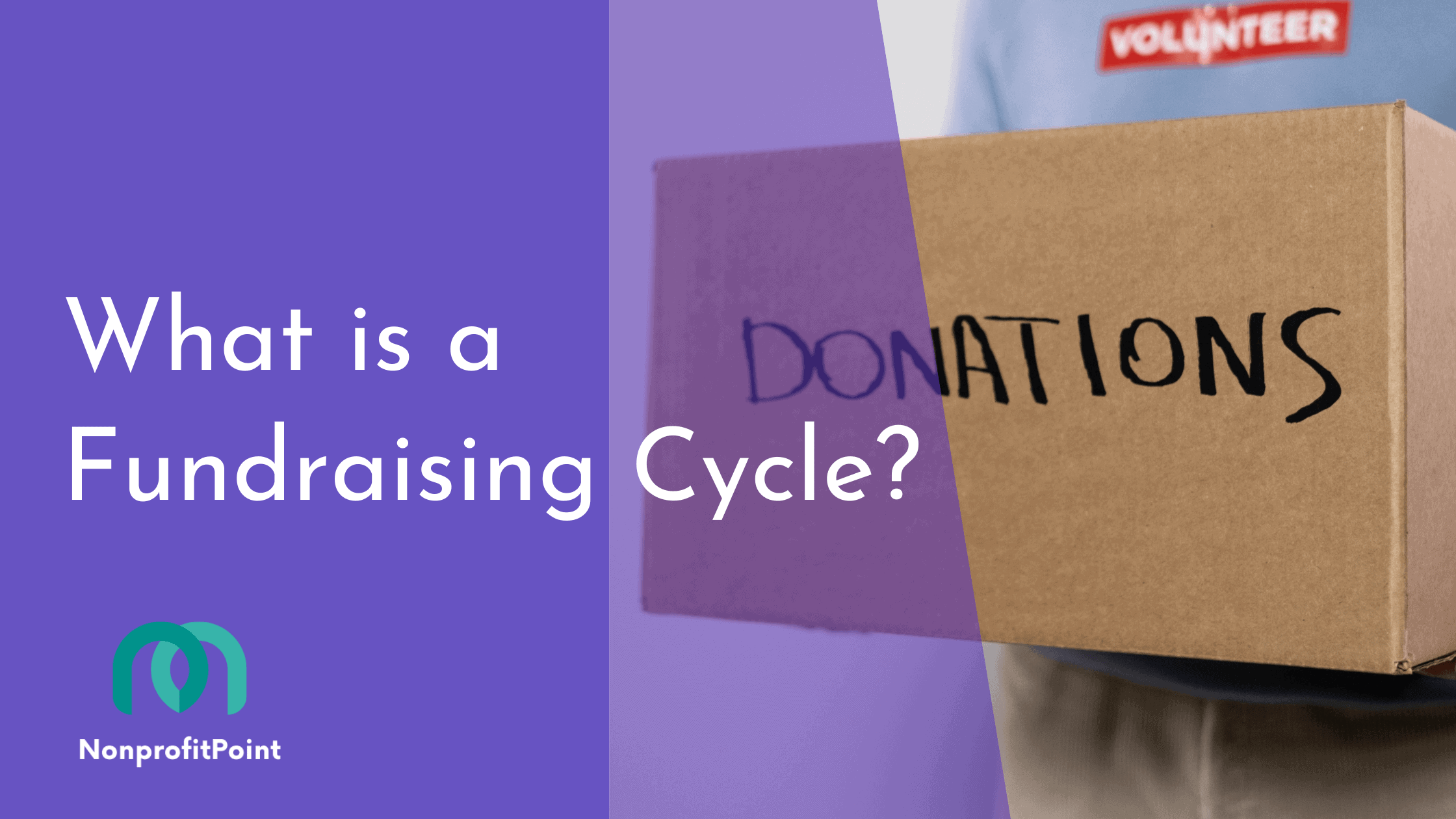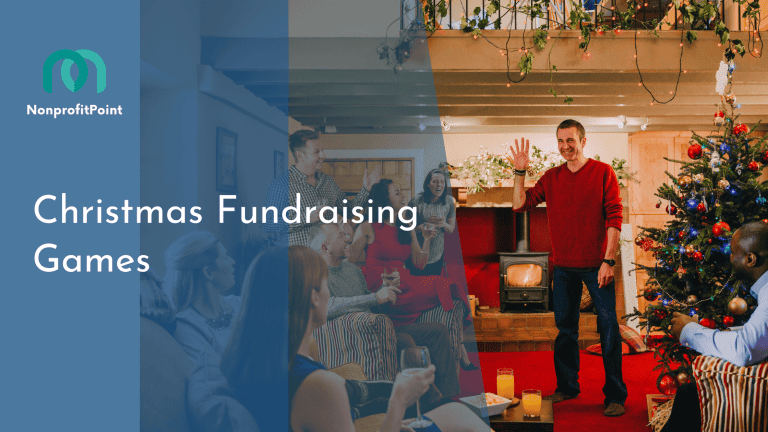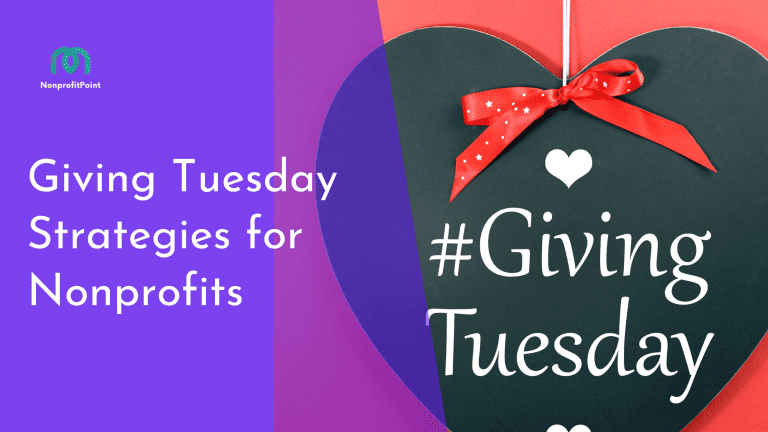What is a Fundraising Cycle? Nonprofit Fundraising 101
You’ve done your research about your cause. You’ve started your nonprofit. You know what you want to do, but how will you pay for it? Fundraising is an essential part of any nonprofit’s success. Fundraising cycles are the lifeblood of nonprofits. They determine everything from how organizations spend their money, to where they spend their time, and even who they hire. Understanding the various types of fundraising cycles is critical if you plan to fundraise effectively for your organization over time.
A fundraising cycle consists of 6 steps:-
- Awareness
- Acquisition
- Cultivation
- Solicitation
- Stewardship
- Engagement.
What is a Fundraising Cycle?
A fundraising cycle is a process used by nonprofit organizations to create a strong base of support, which is key for any nonprofit. There are six parts to the fundraising cycle: awareness, acquisition, cultivation, solicitation, stewardship and engagement.
Effective fundraisers have a goal in mind that they want to achieve with their campaign. This can be raising enough money for a specific project or raising money for general operational costs. They then work backwards from that goal and determine what type of fund-raising strategy will help them reach it.
The 6 Steps of Fundraising Cycles
The 6 steps of fundraising cycles are awareness, acquisition, cultivation, solicitation, stewardship and engagement.
- Awareness – To start off the fundraising cycle you need to make sure people know your nonprofit exists. This means establishing your online presence and social media profiles (getting on facebook, twitter or linkedin)
- Acquisition – Once you get people to your website, you want to make sure they become donors. Acquiring a donor is a big task in itself.
- Cultivation – After acquiring donors you want to cultivate them into long-term supporters who will continue donating time and money throughout the year. One way is to send them regular updates on your progress or ask them for feedback on new projects
- Solicitation – Once you’ve cultivated your donors into long-term supporters it’s time to solicit new donations from them. You can do this through email campaigns or events like an annual gala fundraiser
- Stewardship – A crucial step in the fundraising cycle is stewardship. You want to provide value after they’ve given their donation whether that be through thanking them for their contribution or providing information about how their donation was used
- Engagement – The final step of the fundraising cycle is engagement which is all about staying connected with your donors. It may seem obvious but regular communication is important in order to keep giving year round
Let us see each phase in detail:
Awareness Phase
The first step of the fundraising cycle is the awareness phase. This is the stage where you reach out to potential donors and let them know that you exist. You might want to design a new marketing campaign or host an event that brings in potential donors. The goal of this step is to get people talking about your nonprofit online, offline, and in the community.
To do this, you should think about your target audience and how to reach them. A good way to raise awareness is to make sure that your organization is seen as an integral part of the community. You can do this by becoming involved in any local events or fundraisers.
Acquisition Phase
This is the stage where you’re trying to find people who would be interested in donating money and/or time to your nonprofit. You’ll want to reach these potential donors through methods like:
- Search Engine Optimization (SEO)
- Display Ads on Social Media Pages
- Offline Advertising Methods, such as flyers and TV commercials
- Promotional Items, such as t-shirts with your organization’s logo
The goal of this stage is to create awareness about your nonprofit. It’s the most important stage because it will determine how successful your organization will be at the end of the cycle. Acquiring donors is all about getting people aware of what makes your nonprofit great and making them want to donate or volunteer their time.
If you can capture the attention of someone, there will be a good chance that he or she will donate or work for you.
Acquisition is the most important factor in making an organization successful. It’s important to get your message out there and to have people paying attention to what you’ve got going on with your organization.
Your budget will vary depending on what type of nonprofit organization you’re running. Some organizations spend thousands of dollars on acquiring donors while others rely on word-of-mouth advertising.
Cultivation Phase
A successful cycle starts with cultivation. Cultivating a donor is just as important as acquiring a new donor. A cultivation process can be done by sending monthly emails, doing one-off events, or hosting an annual gala. The purpose of this step is to engage supporters and grow your donor base. This gives donors a chance to get to know your organization better and make a deeper connection.
As mentioned before, one of the most crucial steps in any fundraising cycle is cultivation. It’s all about fostering a relationship with your supporters and making them feel appreciated for their contribution over time. Although it may not be the biggest chunk of money you raise during the year, cultivating donors will help you create a more consistent flow of donations from them!
Solicitation Phase
Solicitation phase is yet another important fundraising cycle for a nonprofit organization. This is where you ask people to make a donation, which often includes sending an email or making a phone call. It could also be inviting them to attend your event or asking for their sponsorship.
The key thing to remember here is that one idea can be appealing in papers but might not sway most of the people to make donations.
It can be estimated that, while there are more than tens of thousands of nonprofits, an average donor donates money to only four organizations in a given year. So it is vital that you come up with a technique to separate yours from the others. Donor’s attention span lasts anywhere between 15 and 20 seconds! Targeting the right audience matters a lot too. For instance, if you have little awareness of where your current supporters reside, it makes sense to refine your social media efforts so that they increase the number of ‘actions’ on your online content and community building efforts. Remember what Jeff Walker said, ‘People don’t care how much you know, until they know how much you care.’
While preparing for solicitation phase, it is also important to consider the administrative aspects of your campaign. This includes:
Determining who is responsible for each task? It requires constant communication to minimize confusion and delays.
A record of every task that was done by the team members. Be sure to note down exactly what hours were spent on each task. The data referred above will arm your database manager with enough ammunition to help make an informed decision on whether to hire more staff or not. You will also be able to evaluate which perk or action by your donor was the most influencing one and assign it a pre-determined ‘cost’.
Stewardship Phase
The final step in the fundraising cycle is stewardship. This is the stage that follows the solicitation and engagement steps. Stewardship is all about establishing a relationship with your donors. You want to stay in contact with them, make sure they feel appreciated and valued, and let them know what you’re working on.
Engagement Phase
One of the most important aspects of a fundraising cycle is engagement. This is when you maintain meaningful interactions with donors, volunteers and even board members. You want to show that you care about these individuals and that you’re grateful for their support. A great way to do this is by sending out handwritten thank-you notes, which shows your appreciation for people who donate to your organization.
If you want more engagement, there are many ways you can do this. You can ask people where they would like to volunteer or make an event for them to attend. These are two great ways of engaging with supporters and supporters will love it! Invite them to be a part of your nonprofit’s success by engaging with them regularly.
Conclusion
A nonprofit’s fundraising cycles are critical to the organization’s daily operations and long term goals. With a specific plan for each cycle, the organization can achieve its goals.
In order to define the appropriate fundraising cycle for your organization, you will need to determine what your organization’s goals are. Once you know this, you can create a fundraising plan that helps your organization achieve its goals.






